Blog
Discover the four layers of the forest—and the animals living in it
Read moreAnimals with the longest gestation periods
The animals we keep as pets, like cats and dogs, have much shorter pregnancies than us—but did you know that many animals far surpass our measly nine months? Here are 14 species, including mammals, reptiles, and invertebrates, with the longest gestation periods in the world.
IFAW is an organization dedicated to the rescue and conservation of animals around the world. We work to save wildlife from the threats they face, including disasters, poaching, habitat loss, and human-wildlife conflict. Learn more about how you can get involved.
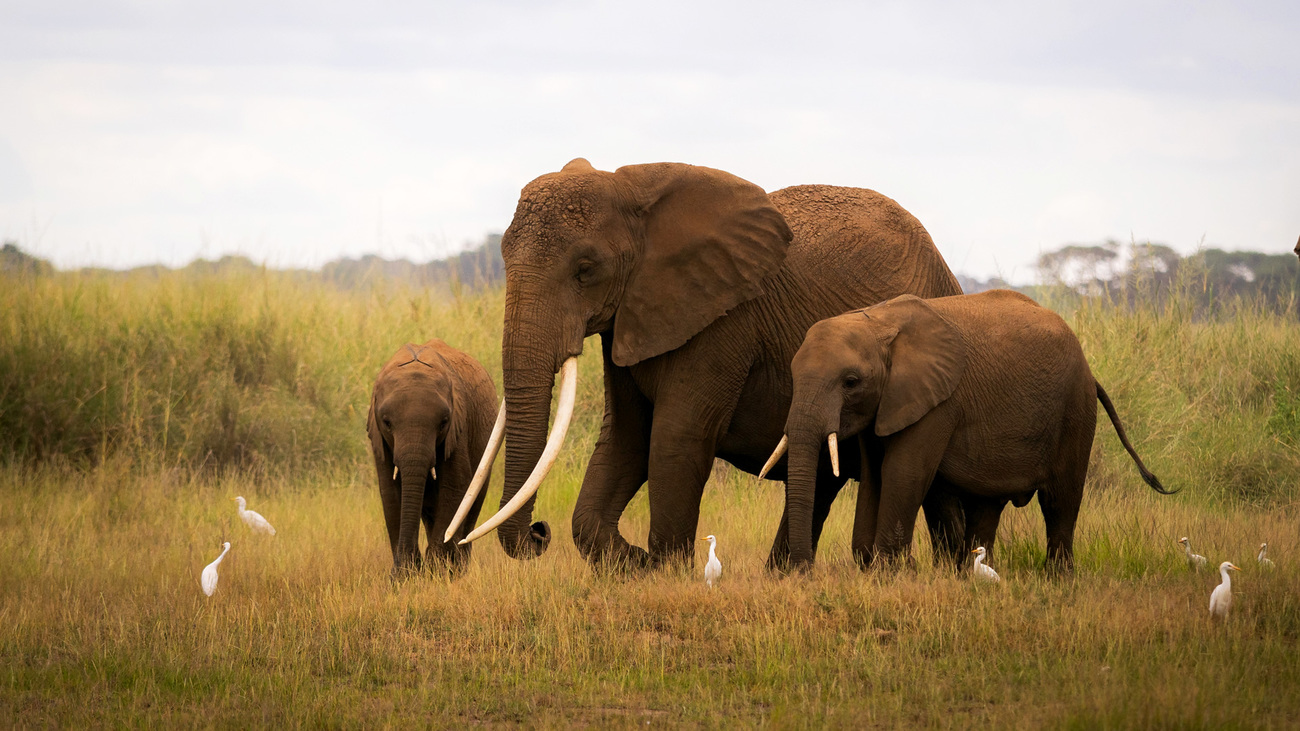
Frilled sharks (Chlamydoselachus anguineus) are long, eel-shaped sharks that live off the coasts of northern Norway, southern Japan, Scotland, southern Australia, and California. They live in deep waters where there isn’t much competition from other sharks.
They’re one of the most primitive shark species, showing very little evolutionary change over the past few million years. Very little is known about them. From the analysis of individuals brought to the surface, it seems frilled sharks mostly feed on squid, various types of fish, and sometimes other sharks. The IUCN lists frilled sharks as least concern—they aren’t actively targeted by the fishing industry, though they are occasionally caught as bycatch.
Frilled sharks are aplacental viviparous, which means the female’s eggs are fertilised and hatched within her body. The embryos then feed on the yolk from their egg until they’re ready to be born. The exact gestation period for the frilled shark is unknown, but it’s thought to be the longest of any vertebrate, possibly lasting up to three and a half years.
The aptly named black alpine salamander (Salamandra atra) is completely black—from its prominent eyes to the tip of its grooved tail—and lives in the European Alps. It can be found at any elevation between 400 and 2,800 meters (1,312 and 9,186 feet).
At such elevations, temperatures drop significantly, so these cold-blooded salamanders hibernate from October to April to survive the coldest seasons. In warmer months, they rest during the day and hunt at night for worms, spiders, snails, larvae, and other insects.
Black alpine salamanders are listed as least concern by the IUCN, but their population appears to be declining. They are threatened by road traffic, habitat destruction, and diseases spread by invasive species.
While many amphibians lay eggs or larvae, black alpine salamanders give birth to one or two fully-developed young. However, it takes a long time for the young to develop, and interestingly, the gestation period changes depending on the elevation. Between 650 and 1,000 meters, it typically takes two years but between 1,400 and 1,700 metres, gestation can take up to three years.
The young salamanders find nourishment from various sources throughout their development. First, they eat their own yolk, then they feed from the yolk of other eggs. Finally, they develop large external gills that take in food from the walls of the oviduct and then lose these gills again before they’re born.
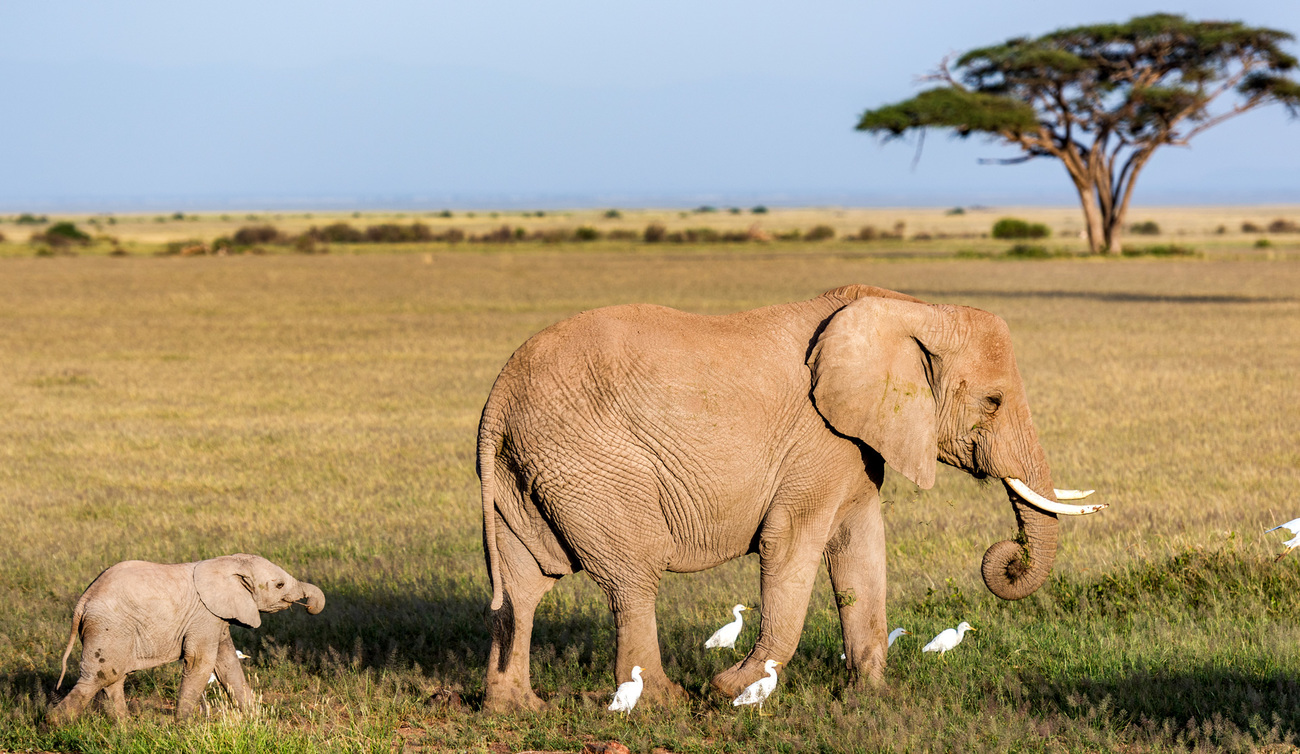
There are three living species of elephant, the African savannah elephant (Loxodonta africana), African forest elephant (Loxodonta cyclotis), and Asian elephant (Elephas maximus). They are the largest living land animals, weighing up to 6,800 kilograms (almost 15,000 pounds).
African forest elephants are found in sub-Saharan Africa, across 20 different countries where they live in humid forest areas. African savannah elephants, on the other hand, avoid forested areas and live in bushlands and savannahs across 24 countries. The Asian elephant lives across Thailand, Cambodia, India, Indonesia, Malaysia, and small areas of China in grasslands, forests, and shrublands.
Unfortunately, all three species of elephant are endangered. The African forest elephant is critically endangered, and now occupies just 25% of its historical range. The African savannah elephant is endangered and has faced a population decline of more than 50% over the past three generations. The Asian elephant is also endangered, with global population estimates between 48,323 and 51,680.
As well as being the biggest land animals, elephants also hold the title of the longest gestation period for any mammal. Both African species stay pregnant for 22 months, and Asian elephants range from 18 to 22 months. This long gestation period is partly because of their size and partly because of the complexity of their brains.
At the end of an elephant’s pregnancy, one calf is born, weighing around 100 kilograms (220 pounds). Males stay with their herd until they reach sexual maturity between the ages of 10 and 14 and leave to join a bachelor herd. Young females stay with their female elders for life.
Sperm whales (Physeter macrocephalus) are the largest species of toothed whales and are found in almost every ocean. The biggest males can grow up to 24 meters long (78 feet) and weigh 50,000 kilograms (110,231 pounds).
They are listed as vulnerable by the IUCN, largely because it’s still uncertain how much they have recovered since the end of open-boat and modern whaling. The pre-whaling global population of over one million individuals was reduced to around 360,000 by the 1990s.
After mating in the spring or summer, female sperm whales carry their young for 14 to 16 months. Once they’re born, calves can’t eat solid food for one year and tend to continue regularly nursing until they turn two years old. Even after this, they continue to occasionally nurse for up to eight years.
Females reach sexual maturity at around nine years old but males—who need to grow big enough to compete against other males to win mating rights—usually become fathers at around 20 years old.
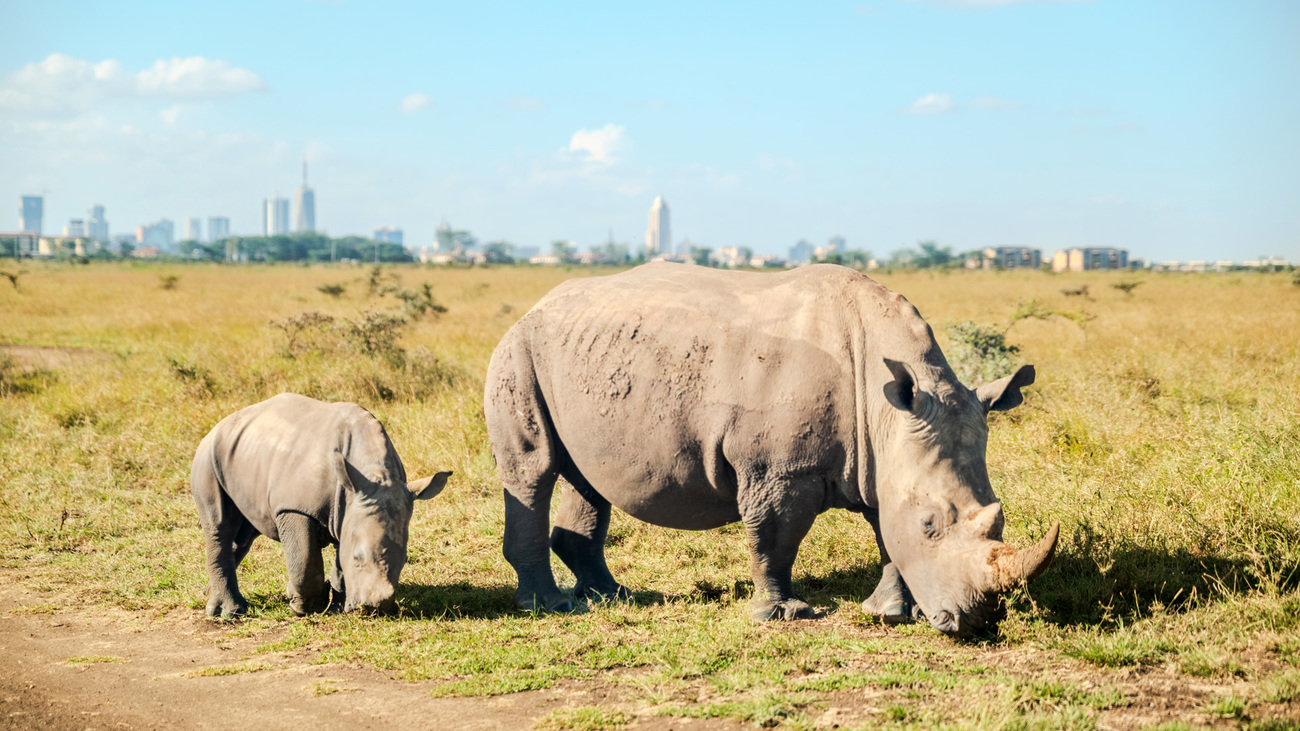
There are five different species of rhino, two of which are found in Africa, the black rhinoceros (Diceros bicornis) and the white rhinoceros (Ceratotherium simum), and three of which are found in Asia: the Sumatran rhinoceros (Dicerorhinus sumatrensis), Javan rhinoceros (Rhinoceros sondaicus), and greater one-horned rhinoceros (Rhinoceros unicornis).
Rhinos live in a variety of habitats, including grasslands, savannahs, shrublands, deserts, and tropical forests. All the species are megaherbivores—plant eaters weighing over 900 kilograms (2,000 pounds). They spend a significant part of their days browsing for vegetation to eat.
Rhino horns, which are made from keratin, the same material as human hair and fingernails, are highly prized in traditional medicine. This has led to severe levels of poaching and put almost all rhino species at risk. The Sumatran, Javan, and black rhinos are all critically endangered, while the greater one-horned rhino is vulnerable and the white rhino is near threatened.
Female rhinos give birth to one calf after 15 to 18 months of pregnancy. These calves stay with their mother for multiple years, often until she’s ready to have another baby. Calves usually weigh around 45 kilograms (100 pounds) at birth and are up and walking within three days.
Orcas (Orcinus orca), also known as killer whales, are the biggest member of the dolphin family. They have a striking black-and-white coloring that makes them easily recognisable, and they are the second-most widely ranging mammal species on Earth after humans.
The taxonomy of orcas is still largely unknown, meaning we’re not sure if populations in different places are the same species or should count as different subspecies. Because of this, they’re listed as data deficient by the IUCN. However, if we count all the killer whales in the world as one species, they don’t meet any criteria for a threatened status. Estimates suggest populations of at least tens of thousands.
Orcas can mate and give birth at any time of year, and mothers always produce a single calf after around 17 months of gestation. Nursing continues for up to two years, after which most calves will separate from their mothers. However, it is also possible for offspring to stay with its mother’s pod for life.
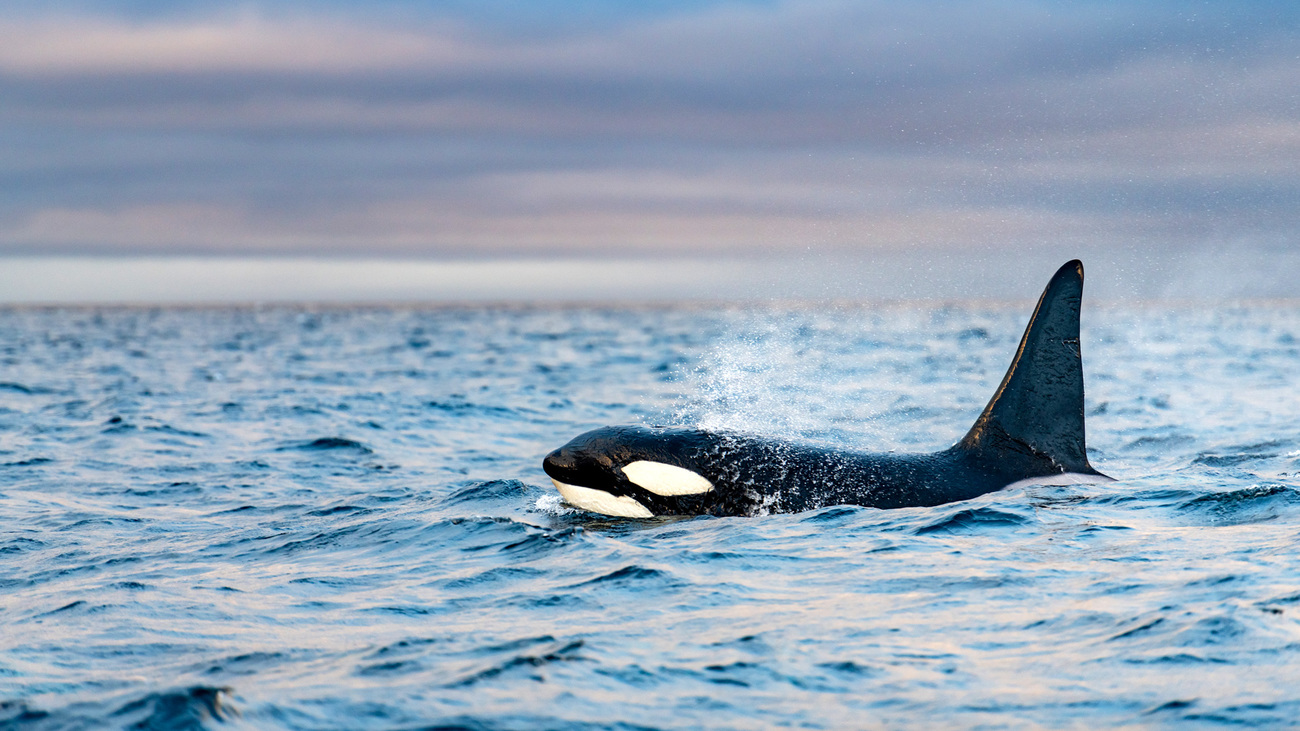
Killer whales—like humans—are one of the few species that experience menopause, meaning females lose their ability to get pregnant well before the end of their lives. It’s estimated that they are fertile for around 25 years and give birth to around five calves in their lives. Afterwards, they focus on looking after the pod as a whole and sharing food with other individuals.
Native to the cold waters around Canada, Greenland, Russia, and Alaska, the walrus (Odobenus rosmarus) is a large marine mammal with long tusks. Both males and females have these tusks, which they use to climb onto ice and defend themselves from predators like polar bears.
Like many marine mammals, walruses keep themselves warm in icy waters through extensive layers of blubber. However, they spend significant time out of water too when they and their young need to rest out of reach of predators. Because of this, they are one of the species that are most affected by the recent decline in sea ice, as less space leads to violent competition and higher mortality rates through predation and drowning. For now, walruses are listed as vulnerable by the IUCN, but experts expect populations to decline further in the coming years.
In winter, males compete for mating rights and the winners couple with multiple females. They mate underwater but the fertilised egg doesn’t implant or start growing immediately. Because of this, the gestation period lasts a total of 15 to 16 months. The calves are born on ice floes and stay with their mother for multiple years. They grow from around 63 kilograms (140 pounds) at birth to 340 kilograms (750 pounds) by the time they become independent.
Practically unchanged for 500 million years, velvet worms are small velveteen-textured predators with no skeleton. They can be as short as 14 millimeters (0.6 inches) or as long as 150 millimeters (6 inches), and they live in tropical rainforests. There are more than 200 species of velvet worm, found in Australia, South Africa, South America, and Southeast Asia.
The status of velvet worms varies across the different species, ranging from near threatened to critically endangered. Two examples of critically endangered species are the pink velvet worm and the lion’s hill velvet worm, both of which are from South Africa and suffering from habitat loss.
When velvet worms mate, the male deposits pockets of sperm directly onto the female’s body, causing her skin tissue to collapse and allow the sperm to enter the body. The sperm penetrates the ovaries and fertilises the eggs, and any leftover sperm can be saved for later thanks to special sperm receptacles near the ovaries.
The young develop in various ways depending on the species—some lay yolk-filled eggs and others develop the yolk-filled eggs in their body. Across all species, the young are fully developed when born after 15 months of gestation.
Camels (genus Camelus) are large hoofed animals that live in arid areas, famous for going long periods without drinking. Camels can be found across Eurasia and Africa, in southern Ukraine, China, Mongolia, and the Sahara desert.
There are three main types of camel, the domesticated Arabian camel (Camelus dromedarius), domesticated Bactrian camel (Camelus bactrianus), and wild Bactrian camel (Camelus ferus). Wild Bactrian camels are listed as critically endangered by the IUCN with a decreasing population of only around 950 mature individuals.
Female camels carry their young for 12 to 14 months and leave the herd to find a covered spot to give birth. In most cases, just one calf is born, though it is possible to have two. They weigh around 37 kilograms (77 pounds) at birth and can stand up and walk within just half an hour. The mother and her young return to the herd after about two weeks, and continue to nurse for between 12 and 18 months.
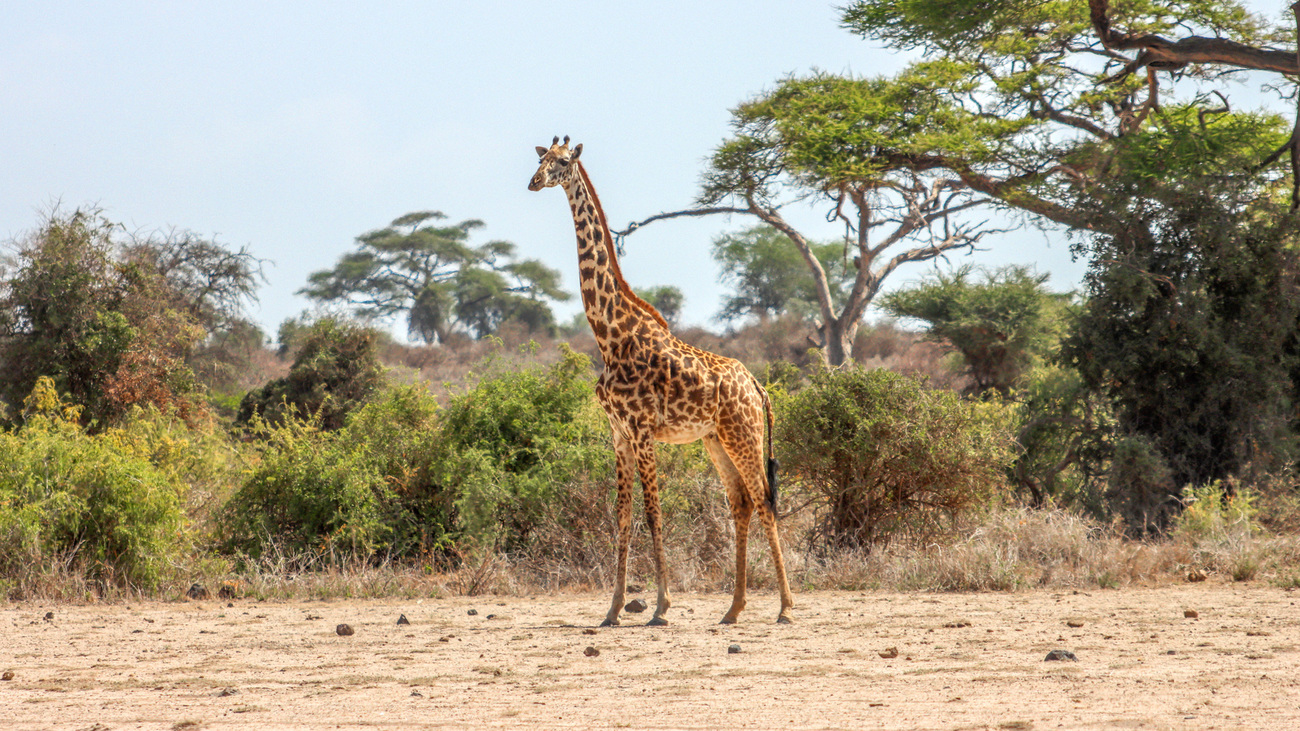
There are nine subspecies of giraffe (Giraffa camelopardalis) that live in numerous pockets of Africa. They can be found in areas of Botswana, Cameroon, Kenya, South Africa, Zambia, and Zimbabwe in forests, savannahs, and shrublands. Giraffes are best known for their uniquely long necks, which help them reach food that’s too high up for other ground-dwelling species.
Unfortunately, giraffes are listed as vulnerable by the IUCN, with a decreasing population of around 68,293 individuals. According to observations, their numbers have declined by 36% to 40% over the past three generations, primarily due to habitat loss, civil unrest, and illegal hunting.
Giraffes carry their young in their wombs for around 15 months and are famous for giving birth while standing up. Because of their long legs, this means calves drop around five feet. Despite this, they can stand up within half an hour and run within 10. They are born around two meters (six feet) tall and weigh 100 kilograms (220 pounds).
Donkeys (Equus asinus) are domesticated animals that are descended from the African wild ass (Equus africanus). Humans have been using donkeys to carry heavy loads since 4,000 BCE. Different donkey breeds can be found all over the world, with overall numbers surpassing 50 million.
As they’re domestic animals, donkeys are not assessed by the IUCN. However, their ancestor, the African wild ass, is unfortunately critically endangered. There are thought to be only 23 to 200 mature individuals left in one small pocket of Ethiopia.
Donkeys stay pregnant for around 14 months, outdoing their distant relatives—horses—despite their smaller size. Foals stand up almost as soon as they’re born and start to search for their mother’s udders. The first time they nurse is very important because the milk is full of essential antibodies the foals need to grow.
Also known as sea cows, manatees (genus Trichechus) are large aquatic mammals that weigh up to 440 kilograms (1,300 pounds). Despite never leaving the water, they don’t have the breath-holding capacities of some other aquatic animals and usually come up to breathe every three or four minutes. Different species live in different areas of the world, including the east coast of North and South America, the Amazon River, and the west coast of Africa.
The West Indian manatee (Trichechus manatus), the African manatee (Trichechus senegalensis), and the Amazonian manatee (Trichechus inunguis) are all listed as vulnerable by the IUCN. Because they live in rivers and coastal waters, they’re usually within close range of humans and are threatened by boats, agriculture, fishing, and pollution.
After around 13 months of gestation, manatees give birth to their single pup underwater and then guide them to the surface to breathe. The young drink milk from the mother, whose teats are located on the base of her flippers. Mother and calf usually stay together for up to two years.
A relative of the rhino, tapirs (Tapirus) are a rare family of mammals found in forests of Indonesia, Thailand, Colombia, Ecuador, Brazil, Peru, Mexico, and Panama. They have a prehensile nose that looks like a short trunk, which they can use to grab leaves or as a snorkel while swimming.
There are four species of tapir: the Malay tapir (Tapirus indicus), mountain tapir (Tapirus pinchaque), lowland tapir (Tapirus terrestris) and Baird’s tapir (Tapirus bairdii).
The lowland tapir is listed by the IUCN as vulnerable, and the other three species are all endangered. Although they live in different places, they face similar threats, including agricultural development, hunting, and human intrusion.
Tapirs have a long gestation period of around 13 to 14 months and give birth to one infant while standing up. The young are born with a distinctive coat made up of white spots and stripes, which helps to keep them hidden. By the time they are six months old, they develop their adult coat, which differs in colour between species. Offspring usually stay with their mothers for 12 to 18 months.
Llamas (Lama glama) are a domesticated species farmed for wool and used as a pack animal. They’re found in Bolivia, Peru, Colombia, Chile, Ecuador, and Argentina. They’re known for their spitting habits and long eyelashes that help to keep sand out of their eyes.
Since they’re a domesticated species, they’re not assessed by the IUCN. However, the species they’re descended from, Lama guanicoe, is listed as least concern and has a population of at least one million individuals in South America.
Llamas stay pregnant for around 11 months and give birth to one baby, called a cria. Its coat can vary from solid white, black, or brown to white with black or brown markings.
Want to help IFAW protect vulnerable and endangered animals around the world? Learn more about our work.
every problem has a solution, every solution needs support.
The problems we face are urgent, complicated, and resistant to change. Real solutions demand creativity, hard work, and involvement from people like you.
Unfortunately, the browser you use is outdated and does not allow you to display the site correctly. Please install any of the modern browsers, for example:
Google Chrome Firefox Safari